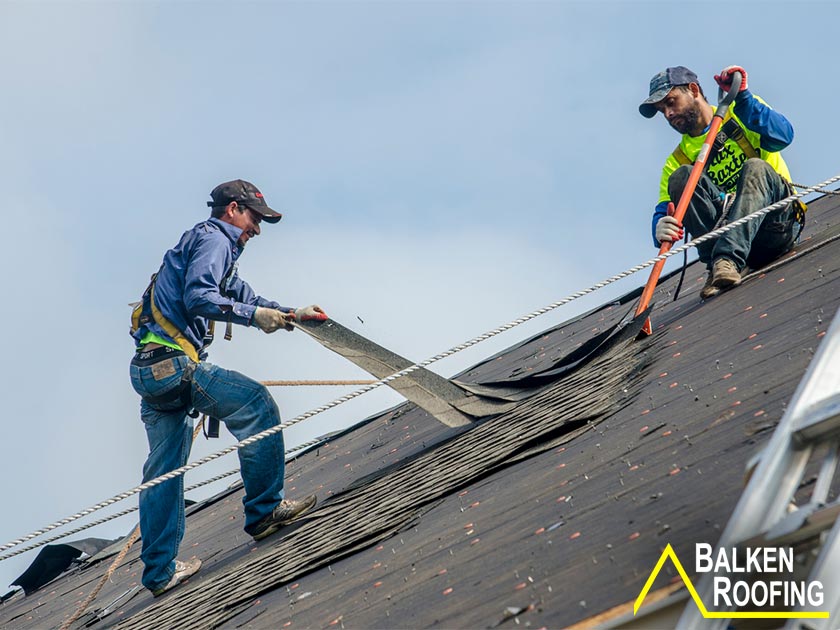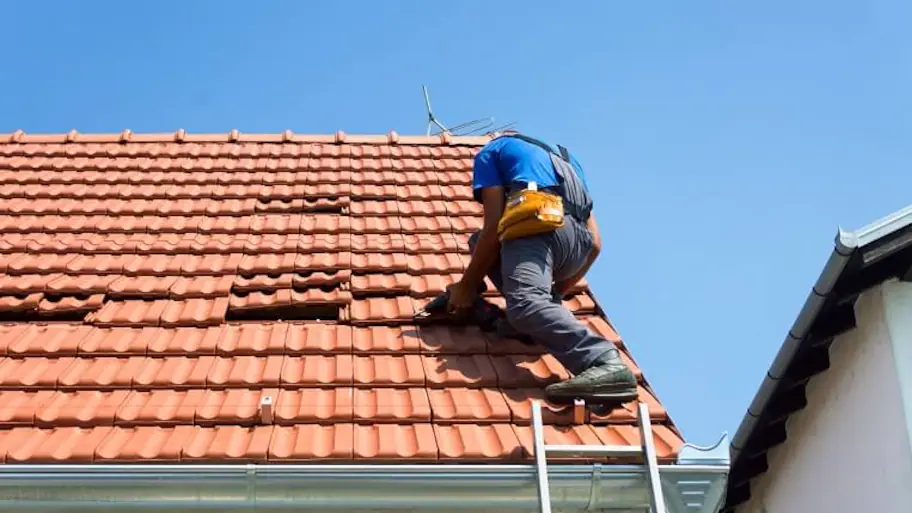How to Choose the very best Roofing Material for Your Home's Design and Budget
Choosing the appropriate roofing material for your home needs a mindful evaluation of both its building style and your financial specifications. Recognizing these elements will certainly aid you make a notified decision, however the procedure does not end there; more understandings into particular product choices and expense ramifications are necessary for a detailed assessment.
Evaluate Your Home's Architectural Style
When picking roofing materials, it is necessary to assess your home's architectural style, as this choice significantly influences both aesthetic consistency and structural honesty. Different architectural styles, such as Colonial, Victorian, or Modern, have unique qualities that determine ideal roof covering options.
As an example, a Colonial home generally includes symmetrical lines and gable roofs, making products like asphalt shingles or slate a suitable choice. In contrast, a Victorian home, known for its intricate details and differed rooflines, commonly gain from using metal or timber tiles that enhance its ornate design. Modern style, with its clean lines and minimal method, can lend itself well to flat roofing systems or low-slope materials, such as membrane layer roofing.

Evaluate Different Roof Products
Selecting the right roof material includes assessing numerous options, each with unique benefits and disadvantages. Asphalt roof shingles are among one of the most popular selections because of their affordability, ease of installment, and range of styles. They normally last 15 to thirty years, making them a sensible choice for budget-conscious home owners.
Steel roof coverings, such as steel or aluminum, deal sturdiness and long life, commonly going beyond 50 years. They are immune to extreme climate and can be energy-efficient. Nonetheless, the first cost is greater than asphalt, which might be a factor to consider for some.
Clay and concrete ceramic tiles are known for their aesthetic charm and outstanding sturdiness. They are fireproof and can last over 100 years but call for a sturdy roof structure because of their weight, which can make complex setup.
Timber shakes offer a natural appearance and decent insulation yet require regular maintenance to avoid rot and pest damages. Slate roofs provide unmatched long life and beauty yet come with a substantial rate tag and need specialized setup.
Eventually, comprehending these products' qualities will certainly aid property owners make informed choices that align with their style choices and budget constraints.
Take Into Consideration Weather Condition and Climate
The option of roofing product should also take into account the local weather and climate conditions, as these factors can dramatically influence the efficiency and longevity of the roof covering. Various environments posture distinct difficulties that specific materials can deal with extra effectively.
As an example, in locations susceptible to heavy rainfall and tornados, products like metal roofing or asphalt tiles with a high wind rating can provide much better defense against leaks and wind damages. On the other hand, homes in bright, arid climates might benefit from materials such as clay ceramic tiles or slate, which use resilience and reflectivity, helping to maintain the indoor cool.

Analyze Your Budget Restrictions
Examining budget restraints is a vital action in the roof material selection process, as it link straight affects the range of alternatives offered. Developing a clear spending plan permits house owners to evaluate the cost of various materials and setup costs. roofing oahu. Roof products differ dramatically my company in cost, from cost-effective alternatives like asphalt roof shingles to higher-end selections such as slate or steel
To successfully assess your budget, take into consideration both the upfront costs and lasting worth. While some products may have a lower initial expense, they can call for more regular fixings or substitutes, leading to greater life time costs. On the other hand, purchasing a sturdy roof material can boost your home's resale value and reduce maintenance prices gradually.
Additionally, property owners ought to make up other monetary aspects, such as labor expenses, potential licenses, and any type of needed structural changes. It is also important to leave a backup fund for unforeseen expenditures that might arise during installation. By very carefully examining budget restraints, house owners can make educated decisions that line up with their economic situation while ensuring a roof covering that complements their home's design and meets their long-lasting requirements.
Seek Specialist Assistance
After establishing a budget plan, the next action entails seeking specialist guidance to make sure that the chosen roofing material fulfills both aesthetic and practical demands. Involving with a qualified roof consultant or specialist can provide vital insights into the various materials available, their long life, maintenance requirements, and viability for your certain environment and home published here framework.

Specialists can assess your home's architecture and advise materials that not just complement its design yet likewise boost its total worth. roofing oahu. For example, while asphalt tiles may be cost-effective, they might not supply the same visual allure as slate or metal roofing in certain building contexts.
In addition, professionals can help navigate regional building regulations and guidelines, ensuring compliance and preventing possible legal concerns. They can also give a detailed understanding of service warranties and installation processes, which can substantially affect your lasting fulfillment with the roof selection.

Conclusion
Finally, selecting the appropriate roof covering material requires a thorough evaluation of building design, climate problems, and financial restrictions. Various materials use differing visual and useful benefits, which must align with both the home's design and environmental needs. Engaging with roof covering professionals can improve decision-making by providing specialist insights and ensuring compliance with local guidelines. Eventually, a knowledgeable option will add to the longevity, performance, and value of the home.